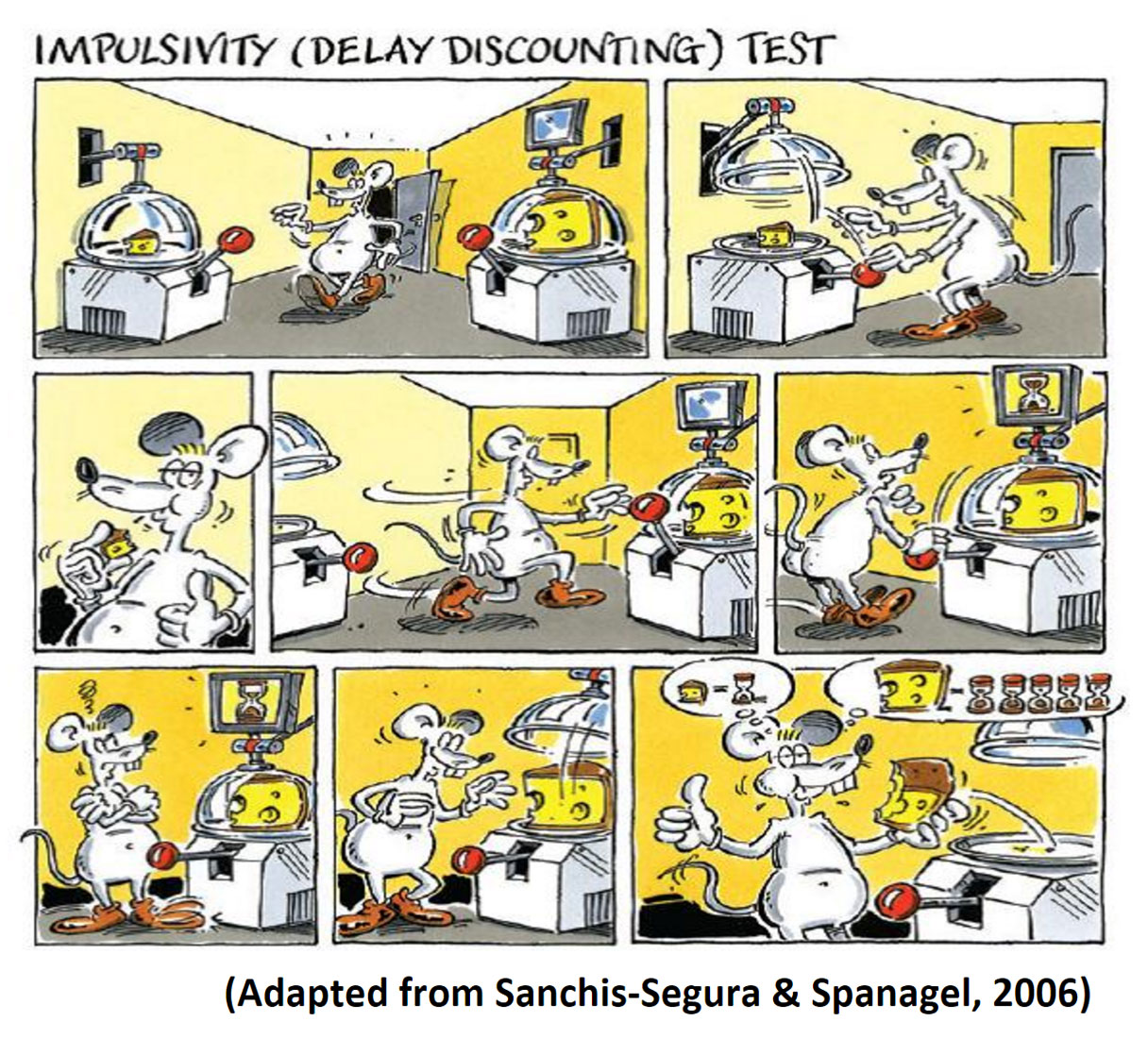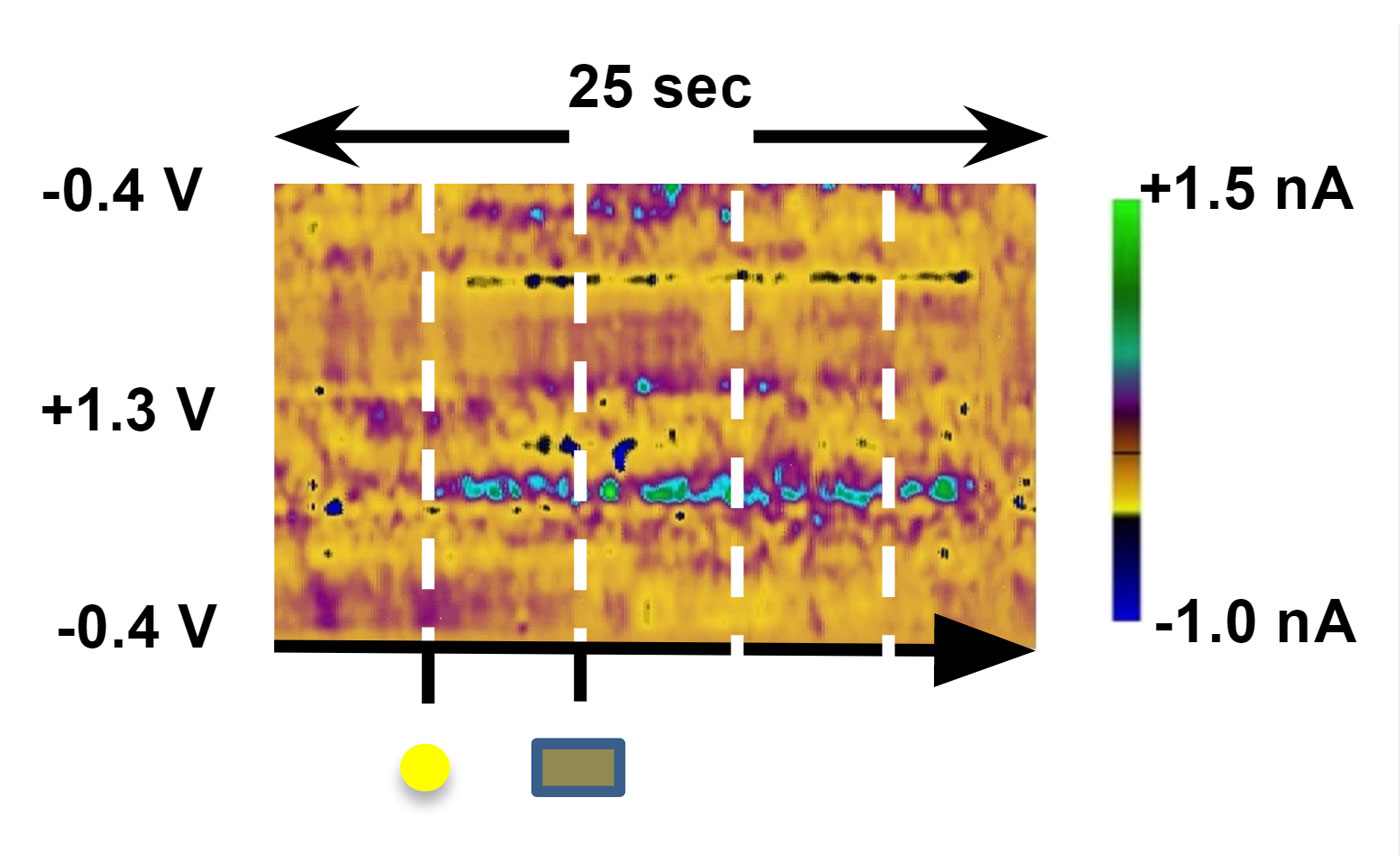High impulsivity is associated with vulnerability to cocaine relapse and treatment failure in cocaine addicts. However, little is known about the neural mechanisms underlying individual differences in impulsivity. In the Sombers Lab, we are training rats to perform a delay discounting task in a standard operant conditioning chamber. The presentation of reward contingencies allows animals to fully learn the predictive associations of cue lights and reward types. Electrochemical recordings of dopamine transients in the nucleus accumbens are conducted during the performance of this task to quantify dopamine released with presentation of the learned cues. Our preliminary results indicate that these dopamine signals may encode individual differences in reward type preference. This line of study will help clarify the neural mechanisms of impulsive decision making, and has the potential to provide novel insight into the prevention and treatment of cocaine addiction.


